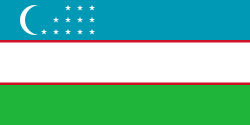Aral Sea Transforms into Desert, Affecting Millions Due to Environmental Crisis
 Uzbekistan
UzbekistanThe Aral Sea, straddling Uzbekistan and Kazakhstan, has dramatically shrunk from 68,000 square kilometers in the 1960s to approximately 8,000 square kilometers today, transforming into the Aralkum desert. This environmental disaster has impacted around 3 million people in the region, as noted by Ibrahim Thiaw, Executive Secretary of the United Nations Convention to Combat Desertification, who called it "one of the biggest environmental disasters in the world."
Historically, the lake was sustained by the Amu Darya and Syr Darya rivers, but extensive irrigation for Soviet cotton farming redirected these waterways, leading to the depletion of the lake. The remaining water is contaminated with high salinity levels, detrimental to local ecosystems and agriculture, where salting has spread toxic dust over hundreds of kilometers. Recent studies show that the airborne dust has increased significantly, worsening air quality and health issues related to congenital defects and other ailments.
Regional authorities are now collaborating with the EU and USAid to vegetate the former lakebed, attempting to mitigate the devastating effects on both the environment and public health.
 Uzbekistan
Uzbekistan Uzbekistan
Uzbekistan Uzbekistan
Uzbekistan